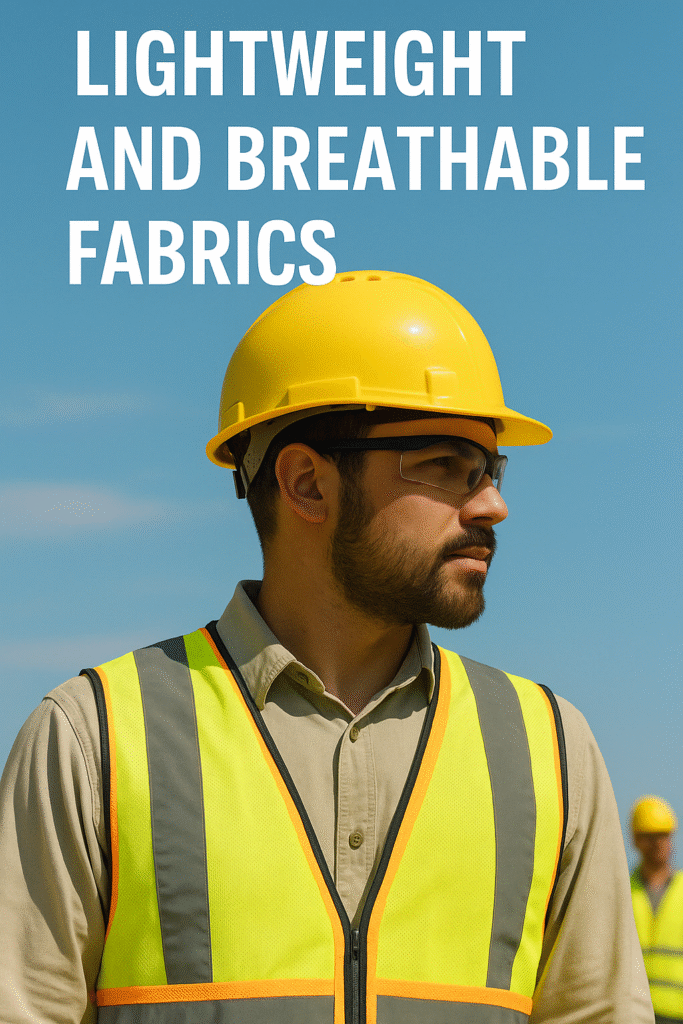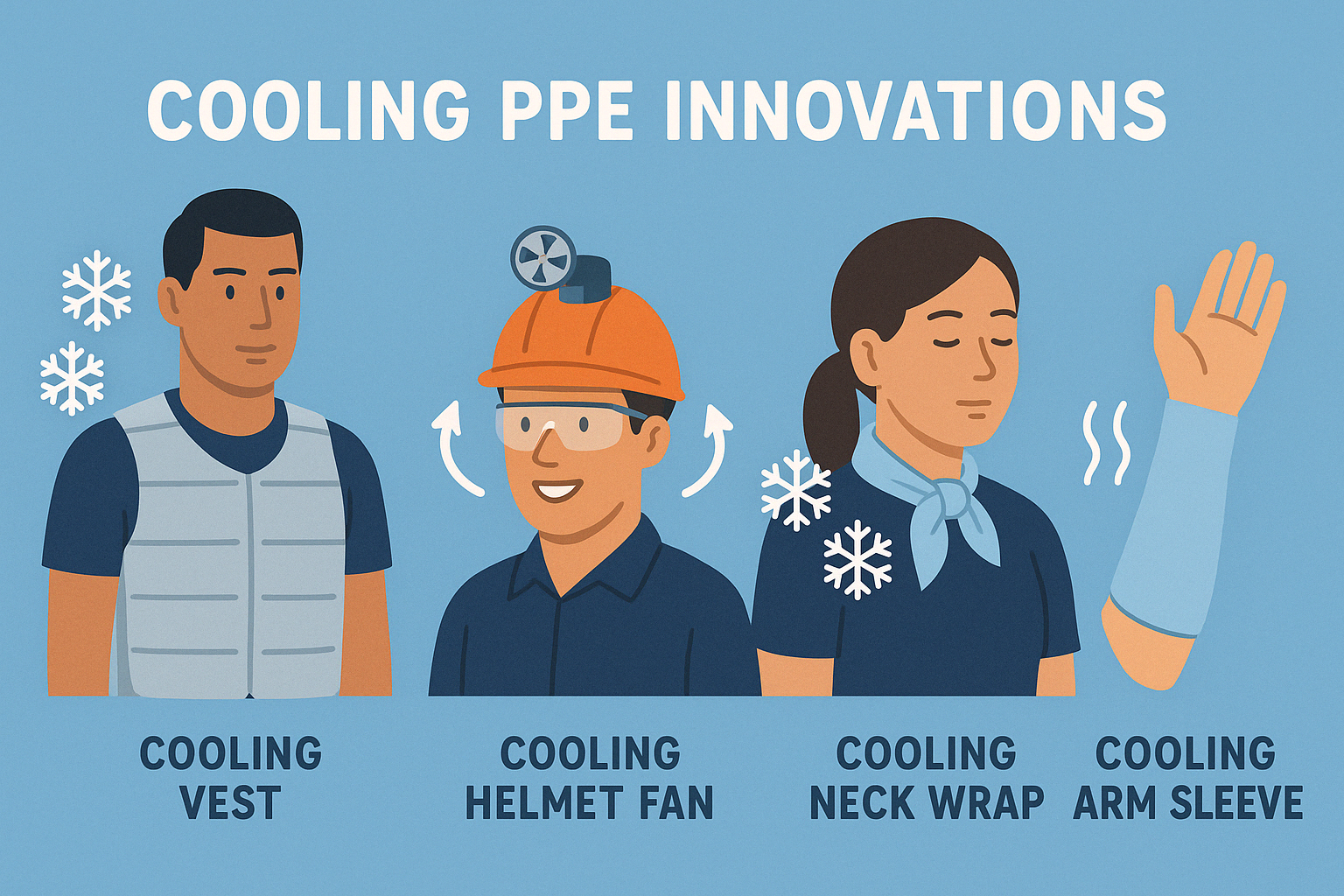Summer PPE becomes crucial when temperatures rise and job hazards remain constant. As heat intensifies, workers wearing personal protective equipment (PPE) face increased risks of heat stress, dehydration, and fatigue.

Properly adjusting gear for hot weather conditions is not just a matter of comfort—it’s essential for worker safety and performance.
- Why Summer PPE Needs Special Attention
- Lightweight and Breathable Fabrics
- Head Protection with Ventilation
- Eye and Face Protection for Bright Days
- Hand and Foot Comfort in Summer
- Cooling PPE Innovations
- Scheduling and Administrative Controls
- Training Workers to Identify Heat-Related Risks
- Regulatory Considerations
- Balancing Safety with Comfort
- Final Thoughts: Embrace Summer PPE
Why Summer PPE Needs Special Attention
Summer introduces environmental stressors that challenge the usability and effectiveness of traditional PPE. While gear must continue to provide protection from mechanical, chemical, and biological hazards, it also needs to accommodate ventilation, moisture control, and reduced thermal insulation.
Materials that insulate too well can trap body heat, increasing the risk of heat exhaustion and heatstroke, especially in outdoor industries like construction, landscaping, agriculture, and roadwork.
Lightweight and Breathable Fabrics

When choosing summer PPE, prioritize materials designed for hot environments. Lightweight, breathable fabrics such as mesh-backed vests, moisture-wicking shirts, and ventilated hard hats help maintain airflow and reduce overheating.
- Flame-resistant (FR) clothing with moisture management properties (e.g., Nomex with mesh panels) can offer both fire protection and heat comfort.
- High-visibility (Hi-Vis) gear made from lighter, perforated fabric improves airflow while maintaining compliance.
💡 Internal Tip: For more on selecting compliant hi-vis clothing, see our article on Hi-Vis Clothing Standards and Best Practices.
Head Protection with Ventilation
Traditional hard hats can trap heat. Many manufacturers now offer vented hard hats with built-in sweatbands and UV resistance. Cooling inserts or pads placed inside helmets can offer additional relief during peak temperatures.
Also consider brim attachments or neck shades that shield from direct sunlight without compromising visibility.
Eye and Face Protection for Bright Days
UV protection isn’t only for skin. Summer PPE should include safety glasses or face shields with UV-blocking lenses. Fog-resistant coatings are also essential, as sweat and humidity can quickly impair vision.
Hand and Foot Comfort in Summer
Wearing gloves and safety boots in summer can lead to excessive sweating, blisters, and fungal infections if not selected wisely. Look for:
- Breathable gloves made from mesh or ventilated synthetic materials that still offer cut or chemical resistance.
- Moisture-wicking socks paired with safety boots that have vented uppers or breathable linings.
- Regular rotation and drying of footwear to prevent foot health issues.
Cooling PPE Innovations
Technology has introduced cooling vests, evaporative bandanas, and hydration backpacks that integrate with existing PPE. These are especially useful for industries like mining, forestry, and agriculture where shade and climate control are limited.

Be sure that any cooling gear used is compatible with other PPE (e.g., doesn’t interfere with fall protection harnesses or flame resistance).
Scheduling and Administrative Controls
While adjusting PPE is critical, consider combining it with work-rest cycles, early morning or evening shifts, and shaded break areas. Even the best PPE won’t be enough if workers are overexposed during peak sun hours.
Training Workers to Identify Heat-Related Risks
Provide summer-specific training to help employees identify and respond to heat stress symptoms. Make sure they understand how PPE adjustments can reduce risk, and encourage self-monitoring and buddy systems in high-heat environments.
Regulatory Considerations
Employers are legally required under OHSA and CSA Z94.1/Z96 standards to ensure PPE is suitable for environmental conditions. In Canada, provinces like Ontario emphasize employer duties to protect workers from heat illness under general duty clauses.
For national-level resources, visit:
- Canadian Centre for Occupational Health and Safety (CCOHS) (DoFollow link)
- OHSE.ca – Canadian Safety Insights (DoFollow link)

Balancing Safety with Comfort
Effective summer PPE must balance protection and comfort. Employers must consult workers during selection processes and consider field trials to find the best solutions for specific roles. Adjusting PPE is not a seasonal luxury—it’s a safety imperative.
Final Thoughts: Embrace Summer PPE
Summer PPE is more than gear—it’s a proactive approach to managing the dual hazards of workplace dangers and extreme heat. Employers and safety professionals must be vigilant about seasonal adaptations, ensuring that no worker is left overheating or underprotected.
By integrating smart material choices, advanced cooling technology, and clear communication, you create a safer, healthier workplace during summer.
Summer PPE is not optional—it’s essential.


No comments yet